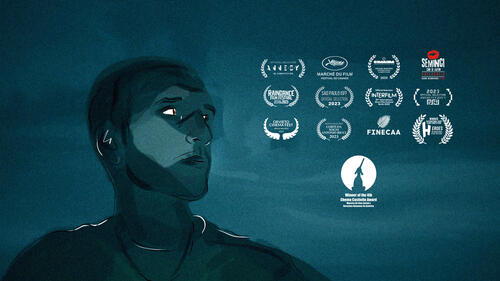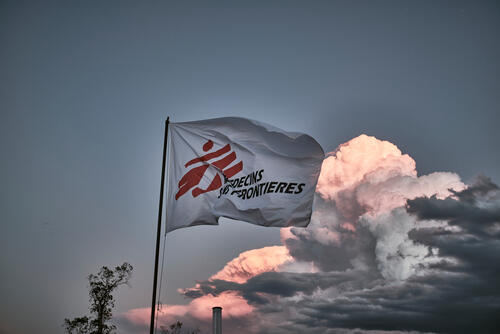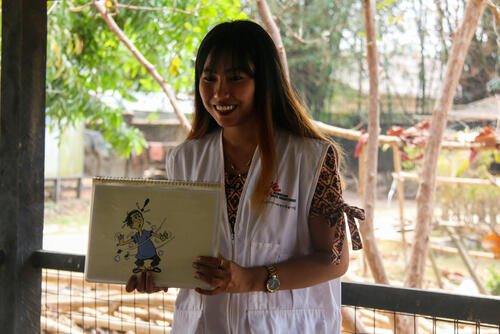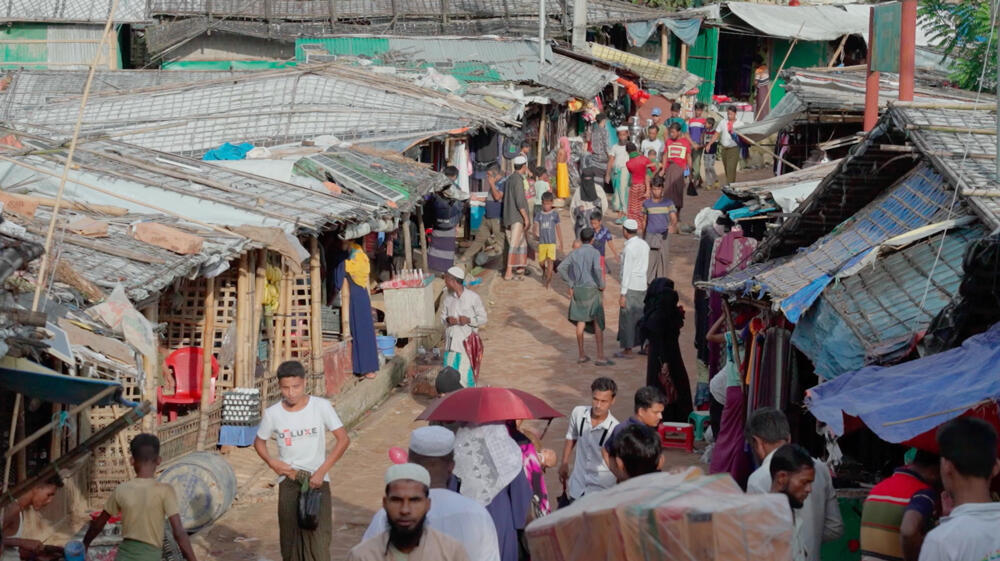Rohingya Refugee Crisis
On 25 August 2017, a massive exodus of 745,000 Rohingya refugees began to flee Myanmar. Now, in 2020, nearly one million people remain stranded in vast refugee camps.
In that first month, a concerted campaign of violence was unleashed by the Myanmar authorities against Rohingya people in the country’s Rakhine State. By the end of the year, more than 660,000 people had crossed the border into Bangladesh.
Those arriving in Bangladesh have shared stories with Médecins Sans Frontières/Doctors Without Borders (MSF) about their villages being systematically raided and burnt by the Myanmar military.
Mob groups targeted the Rohingya and women and children were raped and killed. It was one of the largest displacements of people in recent memory, in such a short period of time.
Preparing for COVID-19 in the world's largest refugee camp
Hosting nearly a million Rohingya people, the Cox's Bazar area of Bangladesh is home to the largest refugee settlement on Earth.
Delivering vital healthcare here is already a daily challenge for our teams. However, with the global spread of the coronavirus pandemic, we are facing a herculean effort to maintain existing services and prevent lives being lost to the virus. MSF has been rapidly scaling up facilities across the district, while we have rolled out tailored training for all staff to help prevent the spread of COVID-19 and manage the treatment of infected patients.
The global health advice for COVID-19 is practically impossible to apply inside the camps. Social distancing measures are unrealistic when people live in overcrowded and flimsy shelters. Basic facilities such as water points, toilets, and food distributions are all communal, with people often waiting in large groups to access these vital services.
We are striving to engage the community, but we know that many people in the camps are frustrated and frightened by the situation.
Rohingya Crisis: Quick Guide
The Rohingya are a stateless ethnic group, the majority of whom are Muslim, who have lived for centuries in the majority Buddhist Myanmar (also known as Burma). However, Myanmar authorities contest this. They claim the Rohingya are Bengali immigrants who came to Myanmar in the 20th Century.
Prior to the military crackdown in August 2017, roughly 1.1 million Rohingya people lived in the South East Asian country.
Described by the United Nations in 2013 as one of the most persecuted minorities in the world, the Rohingya are denied citizenship under Myanmar law.
Inside Northern Rakhine State, Mynamar
Nearly all of the Rohingya in Myanmar live in the western coastal state of Rakhine and are not allowed to leave without government permission. It is one the poorest states in the country with ghetto-like camps in and around the town of Sittwe. The camps were initially built as temporary structures in 2012 but are still being used and are poorly maintained.
There is a lack of basic services and opportunities for the Rohingya in Myanmar, including freedom of movement, healthcare, state education and civil service jobs.
With over 700,000 Rohingya fleeing targeted violence in northern Rakhine, many areas have been depopulated. Yet there are still 550,000 to 600,000 stateless Rohingya across the state.
"The only option is to cross the border to Bangladesh"
MSF had provided healthcare to all communities in northern Rakhine since 1994. At the time operations were suspended on 11 August 2017, MSF was operating four primary healthcare clinics in northern Rakhine – three of which were subsequently burnt down – and was providing over 11,000 primary and reproductive healthcare consultations per month as well as emergency transport and assistance for patients requiring hospitalisation.
MSF maintains a presence in the town of Maungdaw. Despite being unable to run medical activities, our teams continue to hear from the Rohingya community there about the difficulties they face in accessing healthcare. One person MSF spoke to was forced to seek medical care for their sick mother in Bangladesh. However, unfortunately, she died there.
Violence and persecution
Surveys conducted by MSF refugee camps in Bangladesh estimate that at least 9,000 Rohingya died in Myanmar between 25 August and 24 September 2017. At least 6,500 of these (by the most conservative estimations) are thought to have been killed, including at least 430 children below the age of five.
However, this is not a one-off incident. Hundreds of thousands of Rohingya have been fleeing to neighbouring countries by land and sea over the course of many decades. In October 2016, a previous outbreak of violence forced 60,000 Rohingya to flee to Bangladesh.
International humanitarian organisations are still blocked from accessing and operating in northern Rakhine. We are urging the Myanmar government for access to Rakhine State to ensure the impartial delivery of aid to those in need.
Since 25 August 2017, more than 706,000 Rohingya refugees have fled from Myanmar into Bangladesh.
Their arrival comes on top of hundreds of thousands of other Rohingya who arrived in previous years. Combined with the existing Rohingya refugee population, more than 905,000 refugees are now in Bangladesh. People are continuing to cross the border, though in much smaller numbers. Over 8,000 Rohingya have arrived since the start of the year.
2,800,000
EMERGENCY, OUTPATIENT, AND MOBILE CLINIC CONSULTATIONS FROM AUGUST 2017 TO JULY 2022
32,000
MENTAL HEALTH CONSULTATIONS HELD FROM AUGUST 2017 TO JUNE 2019
2,000+
MSF STAFF IN BANGLADESH IN 2019
Most Rohingya now live in precarious and overcrowded refugee camps prone to mudslides and flooding. Living conditions for the refugees need to be massively improved with a particular focus on improvements to water and sanitation, shelter and reducing population density. In current conditions, the risk of people falling ill or being injured is high.
Monsoon Season
The first rains and winds have started, with more than 10 landslides recorded up to 14 May 2018, affecting over a thousand shelters and structures.
Emergency preparedness remains a key priority but continues to be hampered by the lack of sufficient useable land while the window for mitigation is quickly closing.
Bangladesh
Since 1985, MSF has been present in Bangladesh in both the capital Dhaka and Cox’s Bazar, the coastal border town with Myanmar.
Since the unprecedented influx of people crossing the border into Bangladesh, we massively increased our capacity to respond and launched large emergency responses in the Cox's Bazar area. In the first six months of the crisis alone, we treated more than 350,000 patients.
Help us prepare for the next emergency
As of 30 June 2019:
- Health facilities: 10 health facilities, including three hospitals, four primary healthcare centres
- Staff: More than 2,000 MSF staff, the majority Bangladeshi nationals
- Patients: Our teams have carried out 1.4 million consultations and admitted more than 24,000 patients
- Health issues: Respiratory infections, diarrhoeal diseases, skin diseases – all related to poor living conditions
- Other activities: Water and sanitation, mental health, and outreach services.
- Diphtheria: We have treated more than 7,000 people for diphtheria in the Cox’s Bazar district as of the end June 2019, most of them aged between five and 14 years.
- Measles: Between September 2017 and the end of April 2018, we saw 5,000 suspected cases of measles across all the MSF health facilities.
- Maternity: We have delivered more than 3,200 babies at MSF facilities in the area.
- Mental health: Over 32,000 individual mental health consultations have been provided by our staff to patients in need.
Sexual and gender-based violence (SGBV): We have treated over 1,000 survivors of SGBV, with patients aged between nine and 50 years old. However, the real figure of SGBV survivors is impossible to determine as it is likely only a fraction of cases is reported or treated.
Myanmar
Our teams are currently delivering healthcare to four remote Rohingya displacement camps in central Rakhine. This is done through health outreach work and mobile clinics.
Malaysia
Nearby, Malaysia also hosts an estimated 95,000 Rohingya people. Often making the dangerous journey by sea, the Rohingya have been fleeing here for over 30 years. However, they are currently denied formal legal status and are increasingly pushed into a precarious existence alongside other refugees and asylum seekers.
Unable to work legally, many Rohingya disappear into Malaysia’s urban black market economy where they are vulnerable to exploitation, debt bondage, or work accidents. Walking down the street or even seeking medical care can result in refugees being sent to detention centres or extorted.
Our teams are providing medical and mental health consultations to Rohingya people in Malaysia, some of whom have been victims of human trafficking.
Rohingya Refugee Crisis: News and stories

Lost at Sea: a short film showing the harsh reality of the ongoing Rohingya crisis

Safe disembarkation of boat carrying Rohingya refugees necessary to prevent loss of lives


